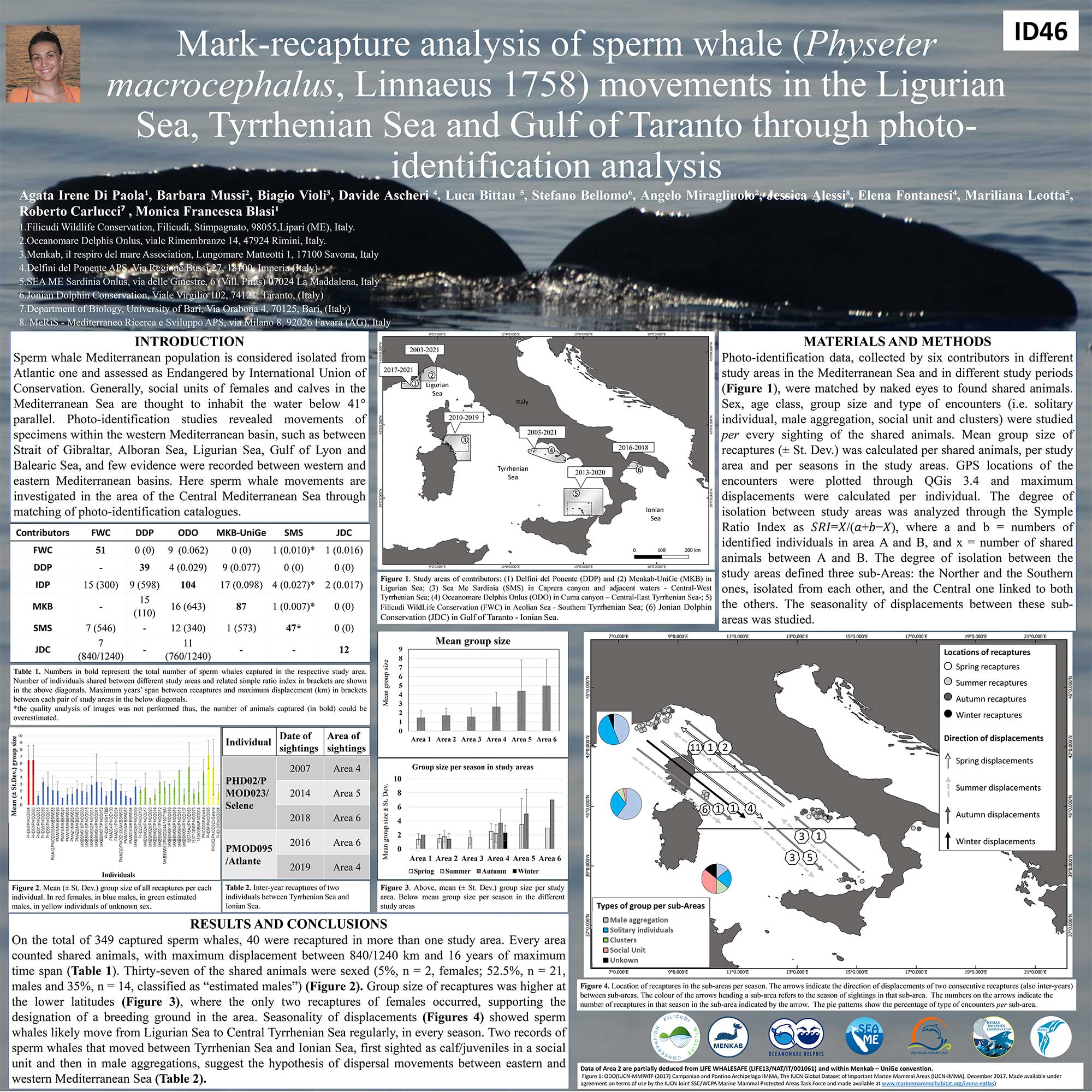Again at the ECS in Galicia, we presented a study that analyzed sperm whale movements by comparing the photo-identification catalogs of six Italian research organizations.
Of 349 individuals photo-identified, 40 were recaptured in more than one study area. Each area counted shared animals, with a maximum displacement of 840-1240 km between two consecutive recaptures of the same individual, and 16 years of maximum time span. Gender was determined for 37 shared animals (2, females; 21, males; 14, classified as “estimated males”).
Type of encounter and group size were analyzed per 185 recaptures of the shared animals, resulting in 9 Social Units, 11 Clusters, 65 Solitary individuals, and 100 Male aggregations. The mean group size was larger (>4) in the southern areas, where recaptures also occurred in Social Units.
Our results from the mark-recapture analysis showed isolation between two of the three sub-regions defined within the area of interest, and the seasonality of displacements among these sub-regions was investigated. The movements of the males were found to be consistent between the Ligurian and Central Tyrrhenian Sea, peaking in summer. The females’ recaptures occurred only between the Central and Southern Tyrrhenian Sea, defining a possible important breeding ground in the area. Furthermore, two individuals performed dispersal movements between the western and eastern basins.
These findings are noteworthy in comprehending the species connectivity pattern and degree of isolation among the Mediterranean basins.

